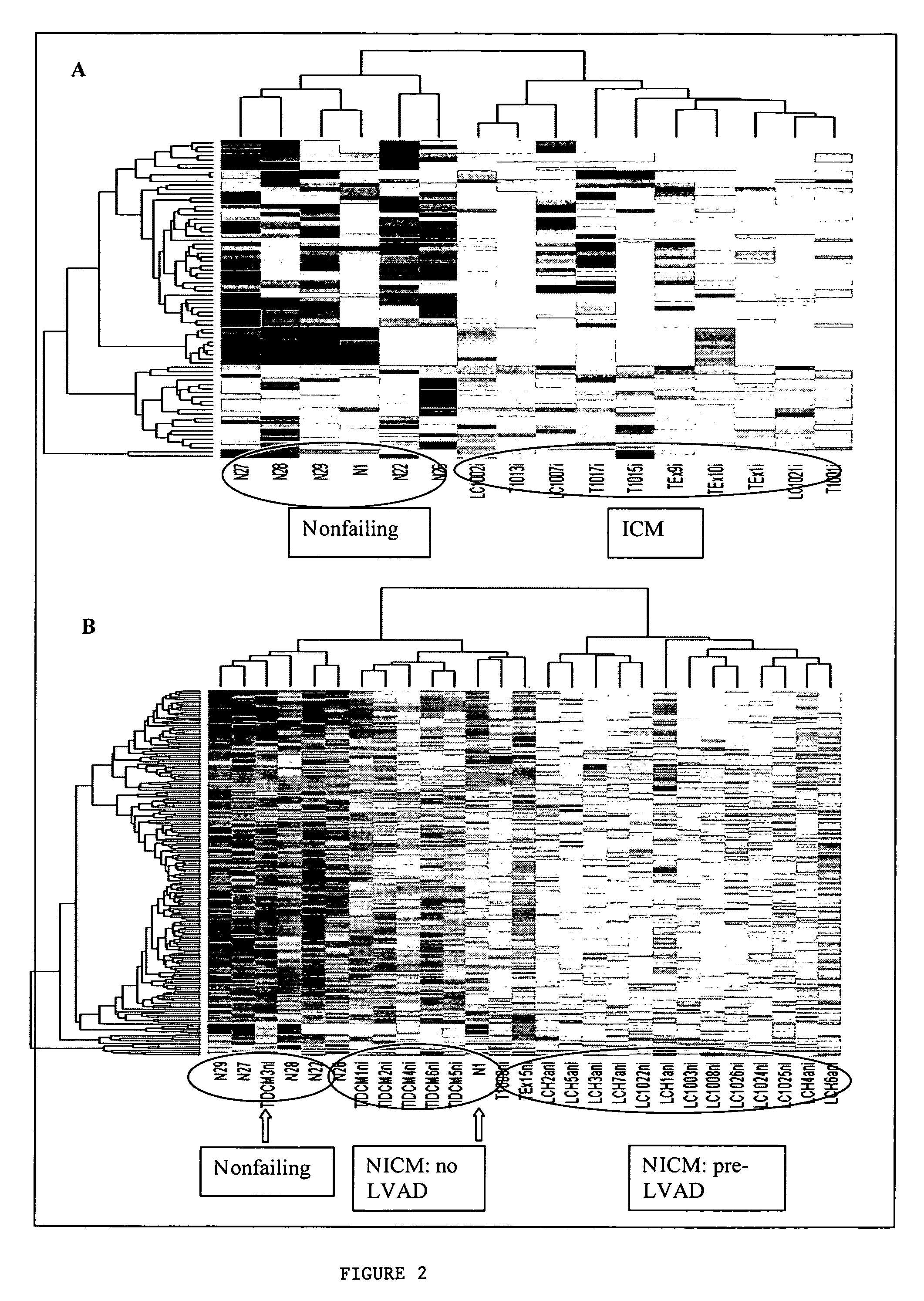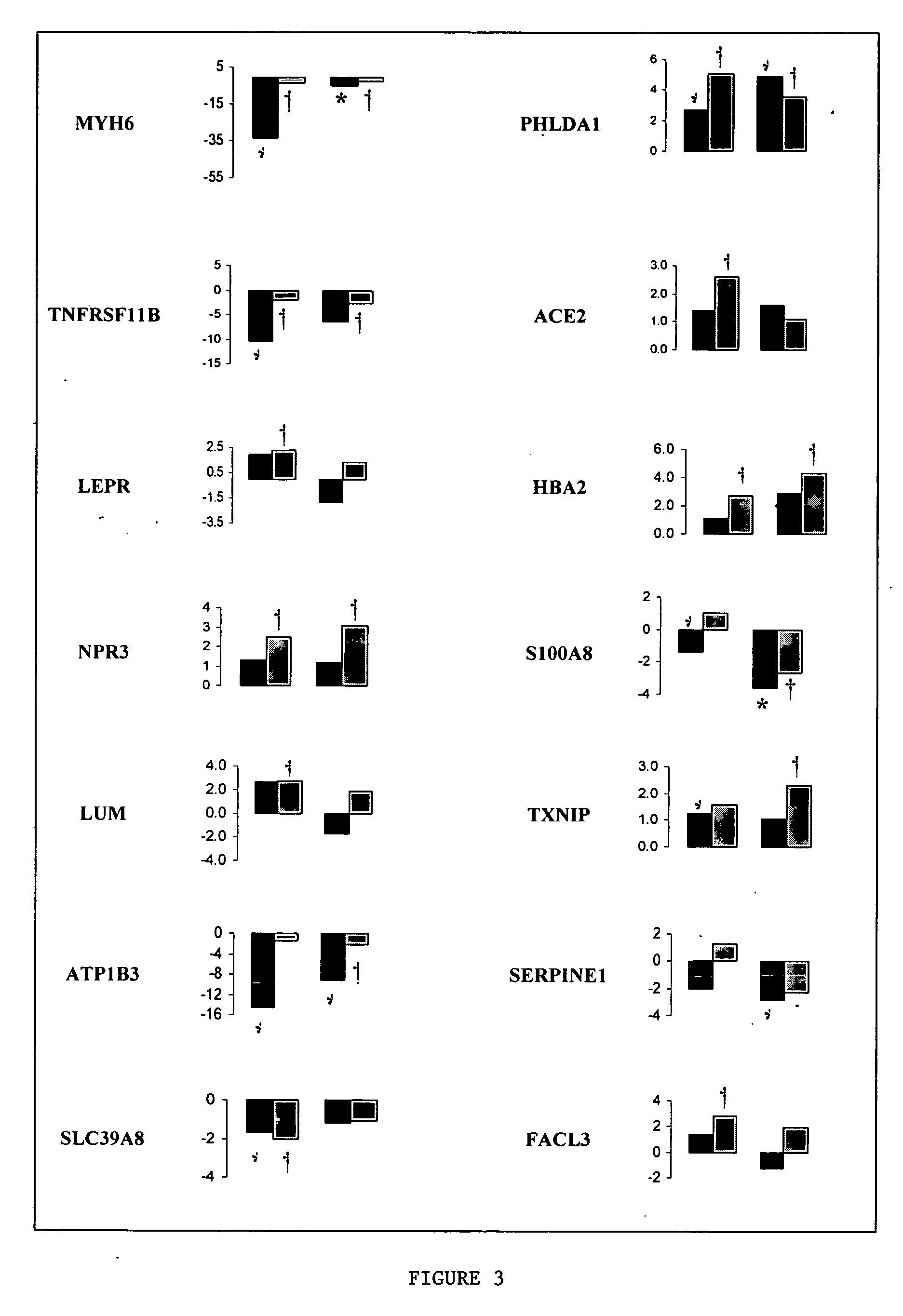Identification of gene expression by heart failure etiology
a gene expression and etiology technology, applied in the field of gene expression profiles, can solve the problems of limited research into specific molecular events, and achieve the effect of reducing cardiac output and differential therapeutic efficacy in nicm and icm
- Summary
- Abstract
- Description
- Claims
- Application Information
AI Technical Summary
Benefits of technology
Problems solved by technology
Method used
Image
Examples
Embodiment Construction
Methods
[0022] The study sample comprised 31 end-stage cardiomyopathy and 6 nonfailing (NF) hearts. Myocardial tissue from end-stage cardiomyopathy patients was obtained at the time of left ventricular assist device (LVAD) placement or cardiac transplantation from two institutions: 1) Johns Hopkins Hospital in Baltimore, Md. (n=24 NICM and ICM samples and 6 NF samples) and 2) University of Minnesota in Minneapolis, Minn. (n=7 NICM samples). Samples from the latter institution were collected and prepared independently (11), and gene expression data files were kindly provided.
[0023] Discarded myocardial tissue from the left ventricular free wall or apex obtained during surgery was immediately frozen in liquid nitrogen and stored at −80° C. There is no evidence that differences in left ventricular sampling sites contribute to sample variability, and in our previous experience, sampling tissue from these two sites did not contribute to variability in gene expressio...
PUM
| Property | Measurement | Unit |
|---|---|---|
| catalytic activity | aaaaa | aaaaa |
| time | aaaaa | aaaaa |
| color | aaaaa | aaaaa |
Abstract
Description
Claims
Application Information
 Login to View More
Login to View More - R&D
- Intellectual Property
- Life Sciences
- Materials
- Tech Scout
- Unparalleled Data Quality
- Higher Quality Content
- 60% Fewer Hallucinations
Browse by: Latest US Patents, China's latest patents, Technical Efficacy Thesaurus, Application Domain, Technology Topic, Popular Technical Reports.
© 2025 PatSnap. All rights reserved.Legal|Privacy policy|Modern Slavery Act Transparency Statement|Sitemap|About US| Contact US: help@patsnap.com



